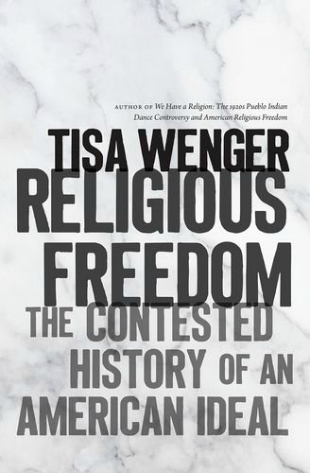"The movement that came to be known as the Ghost Dance began in Nevada with the prophet revelations of a Paiute prophet named Wovoka. Wovoka built on the legacy of an early Paiute prophet; his new message resonated with the existential crises that so many Native people were facing at the time. He offered strict moral guidelines and instructed his followers to remain at peace with their white neighbors. Wovoka's religious views had been influenced by close contact with both Catholics and Mormons; his prophecy that God was about to usher in a new world of peace and harmony echoed millennial themes that were familiar across Christian traditions. Many of those who traveled over the western mountains and plains to hear him returned home with the message that if their people performed the new dance and remained faithful to Wovoka's instructions, God would user in a new world and restore their dead relatives and the buffalo of the plains to life.
"These hopes for indigenous revival terrified many white Americans. This was especially the case in South Dakota, where memories of Indian wars were still quite fresh and some Lakota Indians had openly expressed their anger at the poverty, mismanagement, and indignities of reservation life. When Lakotas began to gather in large numbers to perform the Ghost Dance, sensation-seeking newspapers began to spread rumors that the 'bloodthirsty braves' were preparing to go on the warpath. The Ghost Dancers refused to obey their agents orders to halt the dance; tensions heightened on both sides when the army sent in troops. The crisis culminated on the banks of Wounded Knee Creek with the massacre of several hundred Minneconjou and Hunkpapa Lakotas. Their only crime had been to participate in a ceremony that local whites and military officials viewed as a sign of revolt against settler-colonial rule. The massacre at Wounded Knee did not stop the Ghost Dance, or 'spirit dance' as some called it, among other Native peoples who had embraced it. The BIA [Bureau of Indian Affairs] had made it very clear that this dance would no longer be tolerated, however, and Ghost Dancers across Indian country immediately moved their practice underground.
"The BIA was entirely unwilling to accept the Native insistence that the Ghost Dance was religious and must be granted the right to religious freedom. Ghost Dancers invoked this freedom before and after Wounded Knee. 'This is our way of worshipping the Great Spirit,' a Lakota chief explained to one Jesuit missionary who, hoping to avert tragedy, was trying to convince the Lakota people to abandon the dance. 'You white folks have different prayers, and you quarrel saying each that the other is not right. Let us alone; let us worship the Great Spirit in our own way.' Why should Indians change their way of worshiping he asked, when white Christians could not agree themselves on which of their own conflicting traditions were correct? This chief implicitly located the Ghost Dance within the denominational structure of American religion and, in so doing, asserted its right to the same status as any of the white churches."
